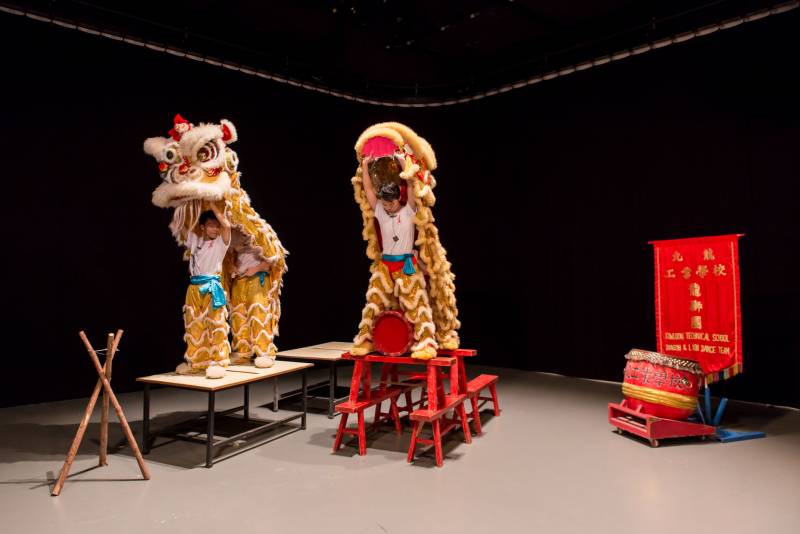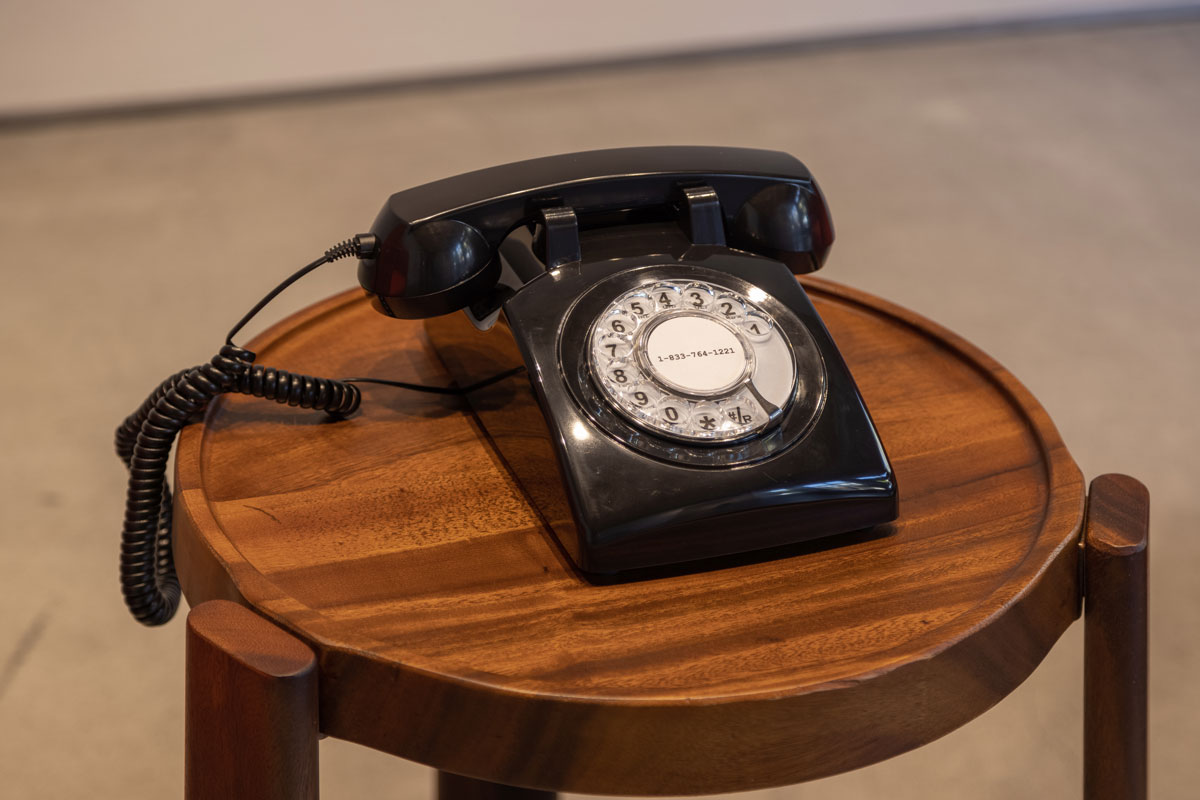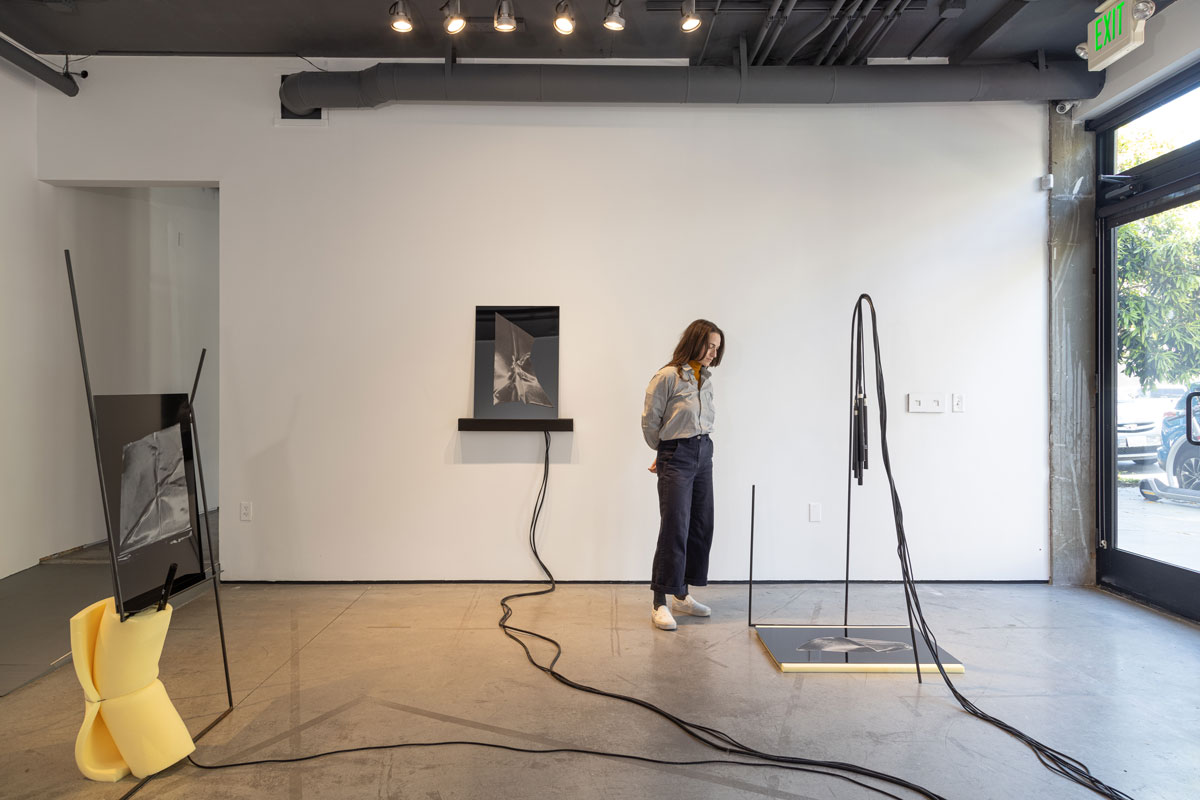For the late composer Pauline Oliveros, listening was a catalyst for change and healing. She referred to “deep listening” as the practice of being fully present to sound, consciously experiencing it with your body. In response to the Vietnam War and her own emotional unrest, she developed her Sonic Meditations, playing sustained drones on accordion, first in the context of a women’s group and later in public performances. After over a year of feigned alertness on Zoom, I welcomed the opportunity to take Oliveros’s introspective activism to heart while viewing the group show Seeing Sound at KADIST San Francisco. The three works on view take up our perception of everyday environments, reminding us that we experience the world through our senses—and not, say, screens.
Kadist’s ‘Seeing Sound’ is the Perfect Reentry to Communal Art Viewing

KADIST’s first exhibition since a brief by-appointment reopening last fall was produced by Independent Curators International (ICI) and curated by Barbara London, founder of the video exhibition and collection programs at MoMA and among the first to exhibit experimental sound work. KADIST is the first stop on Seeing Sound’s multi-year tour.
London sought to create a show that is international in scope—Aura Satz is based in the U.K., Marina Rosenfeld lives in New York, and Samson Young is in Hong Kong—and permits visitors to encounter the artworks together, without the isolating experience of putting on headphones. The works in Seeing Sound consider the questions of who and what we listen to. Foregrounding the hum of daily life, the show counters art history’s tendency to prioritize the visual over the less-defined spaces between installation, performance and visual art.

Seeing Sound opens with Satz’s 2014 installation Dial Tone Drone, featuring a conversation between Oliveros and her friend and electronic music contemporary, Laurie Spiegel. (Both women are included in the highly recommended recent documentary Sisters with Transistors, on the female pioneers of electronic music.) In the KADIST installation, two modern red armchairs flank a table with a black rotary phone; viewers can either call into the piece with their mobile phone or pick up the vintage handset. The audio is an edited conversation between the two musicians. A dial tone sounds in the background, merging into excerpts from Oliveros’ 1975 accordion-and-vocal composition Horse Sings from Cloud and Spiegel’s 1975–76 piece The Expanding Universe.
“When you enter into the realm of the sound, your mind changes,” Oliveros tells Spiegel, noting “the subtle, fine gradations of change” that exist in a single tone. Sound doesn’t simply pass into our brains, it draws us into memories, feelings, daydreams. As the artist and theorist Micah Silver writes, “Our attention moves with our senses, we don’t just mindlessly digest aurality, we build on it with ongoing analysis.” The pleasure of visiting Seeing Sound is noting how we physiologically locate and integrate the artworks, both aurally and visually.

In the second gallery space, Rosenfeld’s 2019 installation Music Stands displays three metal armatures that support a set of microphones, speakers and foam. A bundle of wires snake across the installation, recalling the exposed workings of a Bruce Nauman piece. The artist’s clipped utterances and breath intermittently interject, sometimes punctuated by the slam of a high or low piano key. These sounds take on a feminist valence; they mark the marginalized and incidental. Rosenfeld’s fragments of “so,” “long,” “around” amidst glitches announces that yes, oops, hello there is a person here (or, given that it’s a recording, the impression of a person).
As an audience, we’re entangled with Music Stands. Depending on where we stand, the speakers may emit feedback and static. Staying with the installation, I tried to figure out how the structures related to each other and realized that the voice emanated from the long horizontal speakers, while the electronic noises came from the unobtrusive, smaller ones. Each music stand has a reflective panel with a mysterious image of a crumpled or a folded shape that may highlight correspondences with the forms these sounds take as they modulate throughout the gallery. As Christoph Cox noted in his text for an earlier presentation of these works at the Artists’ Institute in New York, the stands nod to the late composer and installation artist Maryanne Amacher, who was similarly concerned with psychoacoustics and how noise produces shapes in a given architecture.
The exhibition’s final piece is Young’s 2014 video Muted Situation #2: Muted Lion Dance, which shows four students at the Kowloon Technical School rehearsing a lion dance, typically performed on Chinese Lunar New Year. But the traditional drum, cymbals and gong accompaniment are dropped out. Instead, they dance in silence. The performance features two lions, with one person operating the lion’s head and another working the lion’s body. We hear the students’ exertion, the rustle of fabric, the flapping of the lion’s tongue and the rattle of the head. My eyes were drawn to the stomping of their furry, shiny footwear. Focusing on the performers’ gymnastics, I was especially attuned to the precariousness of jumping off a sawhorse and balancing on a drum. Young’s video intensifies the performers’ physicality and humanity.
Like many, the pandemic encouraged my introverted tendencies and I burrowed into my own mind. For so much of the past year and a half, I was just trying to get through the day, hoping I did something to distinguish it from the previous one. Thanks to its scale and restraint, Seeing Sound was an easy reentry to seeing art in a shared space. Stopping to really attend to the work in the show, as obvious as it might be, I was glad to turn my months of self-reflection toward these pieces, and rewarded for it. As we reconnect with our communal experiential universe, the pieces in Seeing Sound tell us to remain alive to transcendent quotidian ambience, and by extension, each other, perhaps more than we did before.
‘Seeing Sound’ is on view at KADIST San Francisco (3295 20th St.) through July 24. Details here.

